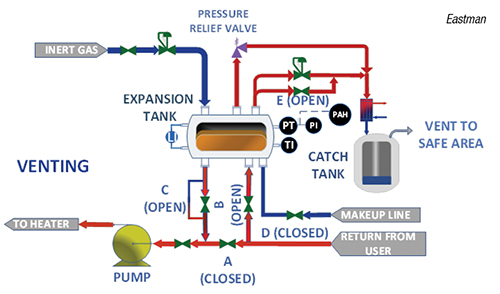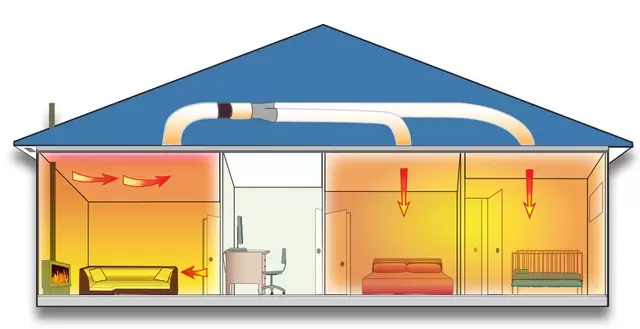Are DVS Heat Transfer Systems Built for High-Performance Electronics Cooling?
Wiki Article
Technologies in Heat Transfer Systems: What You Need to Know for Optimum Performance
Developments in Heat transfer systems are transforming efficiency across numerous industries. Advanced products like graphene and nanofluids guarantee substantial improvements in thermal conductivity. Meanwhile, the integration of IoT and maker learning supplies opportunities for real-time surveillance and enhanced power performance. The landscape of thermal monitoring is swiftly advancing. Understanding these advancements is important for accomplishing ideal system efficiency and sustainability in the future. What specific innovations are shaping this makeover?Arising Products for Improved Heat Transfer

Advanced Heat Exchanger Designs
While traditional Heat exchangers have actually offered their function in different applications, progressed layouts are now emerging to satisfy the boosting demands for effectiveness and performance. These innovative designs, such as plate, shell-and-tube, and finned-tube Heat exchangers, include boosted surface area locations and improved circulation patterns to boost thermal transfer rates. Additionally, compact styles enable lowered area demands without endangering performance. Advanced materials, such as compounds and corrosion-resistant alloys, in addition enhance resilience and efficiency under extreme conditions. In addition, simulation innovations and computational fluid characteristics are significantly utilized to refine these designs, ensuring peak Heat transfer attributes. As markets look for to lessen power consumption and make the most of outcome, the fostering of innovative Heat exchanger layouts is critical in attaining these purposes.The Role of Nanotechnology in Heat Transfer
Nanotechnology plays an essential duty in boosting thermal conductivity within Heat transfer systems. By adjusting products at the nanoscale, scientists have accomplished substantial improvements in power performance. These developments not only maximize efficiency but additionally add to even more lasting power solutions.Improved Thermal Conductivity
Substantial innovations in thermal conductivity have arised through the application of nanotechnology, changing Heat transfer systems throughout numerous sectors. By incorporating nanoparticles right into Heat transfer fluids and materials, researchers have actually attained remarkable rises in thermal conductivity. These nanoparticles, such as carbon nanotubes, graphene, and steel oxides, boost the Heat transfer homes as a result of their high surface area and special thermal attributes. The resulting compounds display improved efficiency in applications varying from electronics cooling systems to renewable resource modern technologies. In addition, the ability to customize the size, form, and structure of nanoparticles permits for maximized thermal management solutions. Consequently, nanotechnology proceeds to play a pivotal role in the development of more effective and reliable Heat transfer systems, paving the way for boosted commercial applications.
Power Effectiveness Improvements

Assimilation of IoT in Heat Transfer Solutions
The combination of IoT in Heat transfer systems presents the application of smart sensing units that boost operational efficiency. These sensors allow real-time data tracking, permitting instant adjustments and optimizations. This technological innovation has the possible to significantly improve efficiency and power monitoring in Heat transfer applications.Smart Sensors Application
As Heat transfer systems develop, the integration of smart sensors through the Web of Points (IoT) has become a read transformative approach. These sensors allow real-time monitoring of pressure, flow, and temperature level rates, enhancing system effectiveness and integrity. By collecting and transmitting information, they assist in aggressive maintenance, minimizing the threat of system failings. Additionally, smart sensors add to energy financial savings by refining operational parameters based on environmental problems. Their ability to evaluate abnormalities and trends permits educated decision-making, guaranteeing peak efficiency of Heat transfer systems. As sectors significantly embrace this modern technology, the execution of clever sensors stands to reinvent exactly how Heat transfer systems are handled, paving the method for better sustainability and improved efficiency results.Real-Time Information Tracking
Exactly how can real-time data keeping find more an eye on improve the efficiency of Heat transfer systems? By integrating Internet of Points (IoT) technology, Heat transfer systems can take advantage of continuous data collection from wise sensing units. This real-time monitoring enables immediate evaluation of pressure, temperature, and flow rates, making it possible for operators to identify ineffectiveness quickly. Subsequently, adjustments can be made to optimize performance, check it out lower energy intake, and expand tools life-span. In addition, predictive upkeep can be applied, lessening unexpected downtime and costly repair services. The capacity to imagine performance metrics with control panels boosts decision-making, cultivating a positive method to system monitoring. Eventually, real-time information checking not just improves functional effectiveness yet additionally contributes to sustainability objectives within commercial procedures.Energy Effectiveness and Sustainability Trends
Power performance and sustainability patterns are reshaping the landscape of Heat transfer systems, driving technology and conformity across various sectors. Organizations are increasingly prioritizing energy-efficient designs to minimize operational prices and decrease environmental effects. The assimilation of sustainable energy sources is ending up being a lot more prevalent, allowing Heat transfer systems to operate sustainably while fulfilling governing demands. In addition, improvements in products and technologies promote reduced energy usage and boost total efficiency. Lifecycle analyses are additionally gaining traction, allowing firms to evaluate the ecological influence of Heat transfer systems from production to disposal. This concentrate on sustainability not just sustains company obligation yet likewise placements companies competitively in a market where customers increasingly favor environmentally friendly services. Power efficiency and sustainability stay vital factors to consider for future developments in Heat transfer technology.Innovations in Thermal Management Solutions
While the need for efficient Heat transfer remains to increase, developments in thermal management services are emerging to address both performance and sustainability obstacles. Advanced materials, such as phase change products and nanofluids, are being created to improve Heat transfer efficiency - DVS Heat Transfer Systems. These products improve thermal conductivity and enable for much better temperature level guideline in various applications. In addition, modern technologies like energetic thermal control systems are getting traction, enabling real-time changes to take care of Heat circulation successfully. These systems add to energy cost savings and minimize the environmental effect of thermal procedures. The assimilation of IoT in thermal monitoring promotes tracking and anticipating maintenance, making certain maximized performance and durability of Heat transfer systems. In general, these developments stand for considerable strides towards even more sustainable thermal monitoring practicesFuture Instructions in Heat Transfer Modern Technology
Arising improvements in thermal administration options signify an encouraging future for Heat transfer technology. Scientists are progressively concentrating on creating products with remarkable thermal conductivity and boosted energy effectiveness. Innovations such as nanofluids, which contain put on hold nanoparticles, provide considerable improvements in Heat transfer efficiency. Additionally, the combination of wise materials that adapt to varying temperature level problems is obtaining grip, permitting for more efficient and receptive systems. The rise of additive production strategies is also making it possible for the style of complex Heat exchanger geometries that maximize fluid flow. Additionally, the execution of device knowing algorithms is expected to revolutionize the optimization of Heat transfer systems, facilitating anticipating upkeep and performance improvement. Collectively, these developments are poised to transform the landscape of Heat transfer modern technologies in numerous markets.
Often Asked Concerns

Just how Do I Select the Right Heat Transfer System for My Application?
Choosing the right Heat transfer system involves assessing application needs, consisting of temperature level arrays, liquid residential or commercial properties, and performance needs. Evaluating system types, maintenance considerations, and cost-effectiveness likewise plays an important function in making a notified choice.What Are the Upkeep Needs for Advanced Heat Exchangers?
Maintenance demands for sophisticated Heat exchangers generally include routine assessments, keeping track of for leaks, cleaning of surfaces, and guaranteeing optimal circulation prices. Following supplier standards guarantees effective operation and lengthens the tools's life expectancy.
Exactly How Do Environmental Elements Influence Heat Transfer Efficiency?
Environmental variables substantially affect Heat transfer effectiveness. Variations in temperature, moisture, and air movement impact thermal conductivity and convective Heat transfer, inevitably impacting system performance and necessitating factor to consider during the layout and procedure of Heat transfer systems.What Safety Standards Relate To Heat Transfer Equipments?
Security standards for Heat transfer systems typically consist of guidelines from companies such as ASME and ASTM. DVS Heat Transfer Systems. These standards address materials, style, and functional practices to guarantee dependability, performance, and defense against dangers in various applications
How Can I Fix Usual Heat Transfer System Issues?
Repairing common Heat transfer system problems involves checking for leakages, making sure appropriate fluid flow, checking insulation stability, and confirming temperature differentials. Recognizing these elements can aid maintain system efficiency and protect against additional complications.Nanotechnology plays a crucial role in improving thermal conductivity within Heat transfer systems. Substantial advancements in thermal conductivity have actually emerged through the application of nanotechnology, transforming Heat transfer systems across various industries. Developments in thermal conductivity with nanotechnology have actually led the method for impressive improvements in power performance within Heat transfer systems. Power effectiveness and sustainability fads are reshaping the landscape of Heat transfer systems, driving development and conformity throughout different markets. The combination of IoT in thermal monitoring facilitates tracking and anticipating upkeep, making certain maximized performance and durability of Heat transfer systems.
Report this wiki page